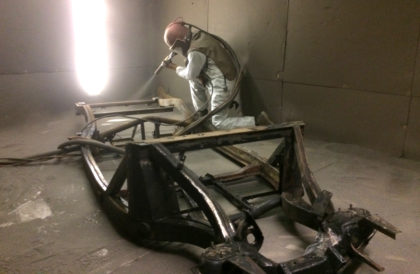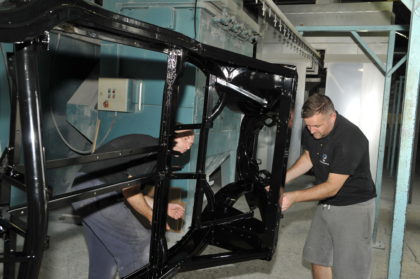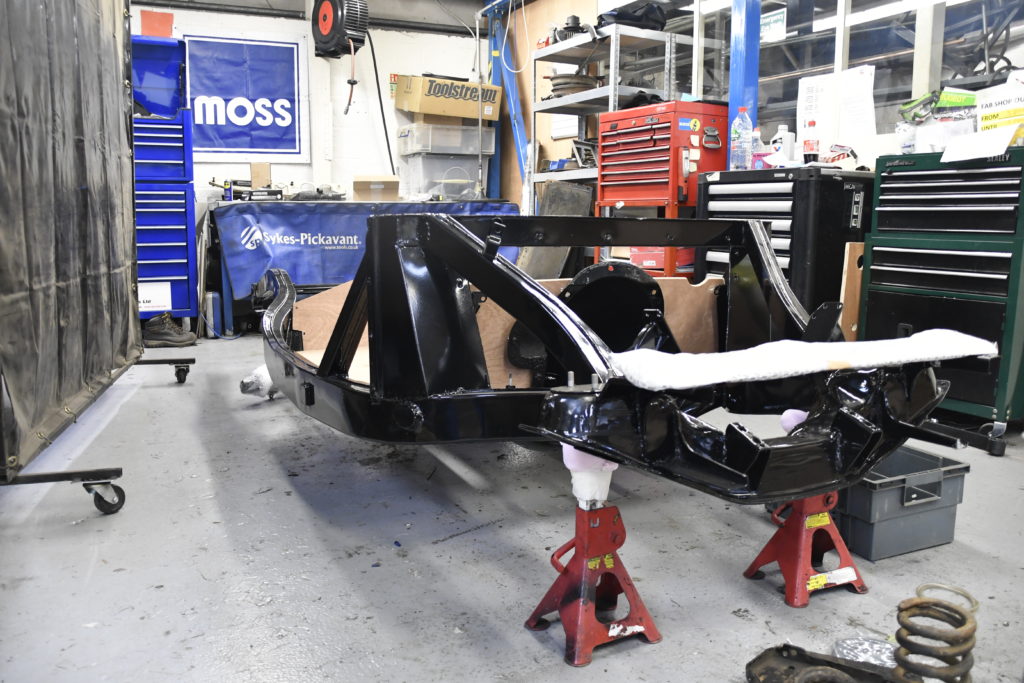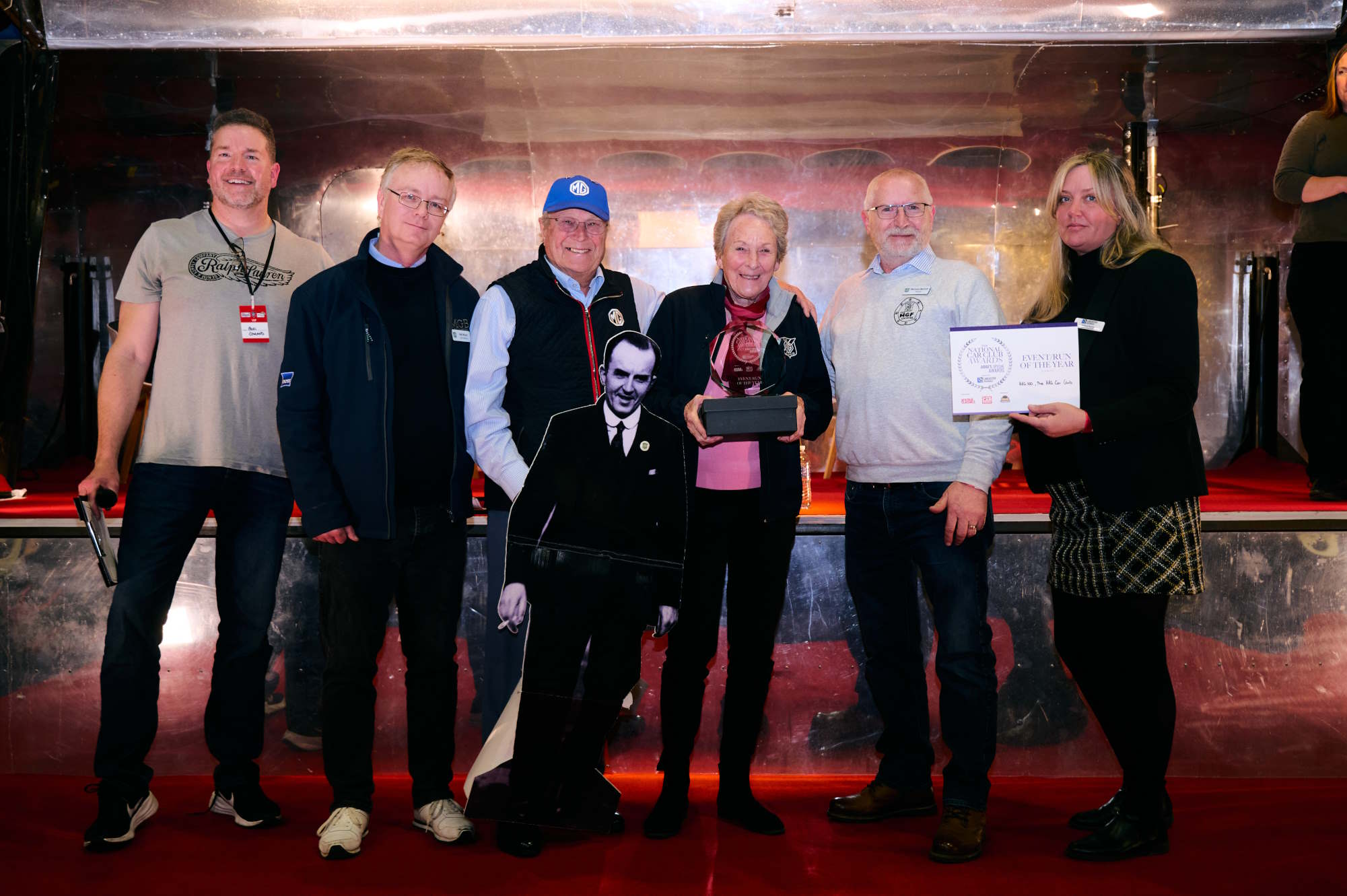Project MGA: Part 4 – Chassis Restoration
Reproduction in whole or in part of any article published on this website is prohibited without written permission of The MG Car Club.
With the chassis of Mike Brewer’s MGA stripped of all its components it looked in excellent condition, but time would tell.
The first job with the stripped chassis was to degrease it as much as possible. This involved brushing it by hand with cleaning chemicals, agitating the grease before giving it a wash off with a high-power pressure washer.
The next stage would be the ultimate test of how well the chassis had endured the Californian climate, as the guys from RPS carried the chassis across to the shot blast room of Cotswold Accident Repairs, located adjacent to the RPS premises.
Shot blasting is the operation of forcibly propelling a stream of abrasive material against a surface under high pressure to, in this case, remove surface contaminants, which will give the best possible surface, essential for the application of paint, powder and other coatings.

It’s at this stage that any nasty surprises are revealed, especially if you’re shot blasting a car body, as it removes all paint, filler and rusty metal. Thankfully the chassis was sound so we were able to move to the next stage.
A shiny new coat
Mike opted to powder coat the chassis and components over the traditional wet painting. Powder coating is the electrostatic application of powder to metal parts. The powder is then cured by heating, resulting in a hard, smooth, protective coating.
The chassis was taken straight from the shot blasters to Vale Powder Coatings on a dry day, to keep moisture to a minimum; the last thing you want is for moisture to settle on the bare metal of the chassis.

Vale Powder Coatings, based in East Challow close to Abingdon, have over 20 years of experience in the powder coating industry, and with their state-of-the-art oven have the flexibility to coat most shapes and sizes, from an MGA chassis to a one-inch bracket.
When the chassis and other components arrived at Vale, they were taken straight in and hung up to be, air blown dry and Etch primed by Sam. This protects the metal and also helps key the surface so the powder adheres to it.
With the etch primer applied and cured, the guys set about putting bungs in the holes and caps over the threaded studs to stop the powder ingress and prevent the laborious and time-consuming task of re-tapping all the threads.
The etched parts work their way around the Vale premises on a hanging conveyer system until they reach John who applies the powder in an extract booth. The booth removes the excess powder to a large underfloor tank that’s emptied once a fortnight. One of the benefits of powder coating is that it is an environmentally safe finishing process because it produces few volatile organic compounds. The powder used is electrically charged from the gun as it is applied to the part, giving each particle of the powder a negative charge.
The chassis and parts being powder coated are electrically grounded on the hanging conveyer as a means of attracting and attaching the powder to the part’s surface. This electrostatic attraction is a key requirement of the process and results in a uniform coating of dry powder clinging to the parts.
Once every nook and crevice has been coated in powder, the items make their way around the conveyer and into the state-of-the-art electronically controlled oven. The oven runs at a constant and even 195°C, meaning no hotspots. The items travel through the oven slowly whilst it heats the metal and the powder gels, flows and cures to produce a smooth, durable powder coat finish.
During the curing process, the heat of the metal makes a chemical reaction between the particles of powder take place. After about 20 minutes the parts started to emerge from the oven with a deep, even, gloss black coating. Powder coating is typically a one-coat finish, so once the chassis and other items had cooled they were wrapped and on their way back to RPS. The total process time from start to finish was just three hours.
With the chassis and parts back at RPS the rebuild begins in earnest next month, with a first for the MGA.


 MG Car Club
MG Car Club

